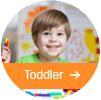Breath-Holding in Younger Children
Seeing your child hold their breath until they look distressed is a very upsetting experience for parents.
It’s rarely dangerous but it might indicate that further medical investigation is required.
What happens
This is usually something seen between 12-24 months though it can happen a little earlier, perhaps as young as 6 months.
The exact causes are unknown but it seems typically to not be under the child’s direct conscious control and is often associated with a reaction to fear or a temper tantrum. Do not remonstrate with your child if it happens – they may have little or no control over it.
On the plus side, it is not unusual in itself and in most cases, it is not linked with ill-health (though there are some exceptions). Most children who experience it usually no longer do so after about 2 years of age though it may last until the age of 5 or so.
Slightly more concerning for parents is that in some cases, it may result in unconsciousness in your child, at which time breathing restarts automatically.
Symptoms
These can vary hugely. Medical specialists divide these into two types of breath-holding:
- Cyanotic – the most common variety, this usually arises during a crying or tantrum spell though shock can also be a cause. It usually results in the child starting to go blue around the lips:
- Pallid – as the name suggests, their skin may go very pale and the attack might not be obviously associated with distress or crying. Afterwards, they might be slightly sweaty or clammy and also very tired. This form is sometimes seen as an indicator of later life tendencies towards fainting.
Both forms may last on average between 30-60 seconds.
Related medical issues
Some children who experience breath-holding may have a form of iron deficiency (anaemia). This can be easily detected by a simple blood test and is typically treatable through iron supplements.
There may be other much rarer underlying conditions. That’s why after the first episode, you should consult your doctor for a check.
How to deal with an instance
If you see this in your child:
- Don’t panic;
- Don’t shout, shake or otherwise agitate them;
- Stop others around you panicking;
- Move the child gently onto their side;
- Watch over them until the episode has passed;
- Never put anything into their mouth;
- Take a time-check and count the seconds elapsing.
The attack should pass within 30-60 seconds.
Confounding symptoms
If your child has no history of breath-holding but seems to have stopped breathing for longer than this period, you should immediately start emergency procedures including calling an ambulance. Make sure you have been previously trained in baby/young child emergency first aid techniques.
Important note
Please remember, this is not qualified medical advice.
If you believe your child has experienced a breath-holding episode and particularly if they have lost consciousness while doing so, you must consult a medically-qualified professional for a further check.













